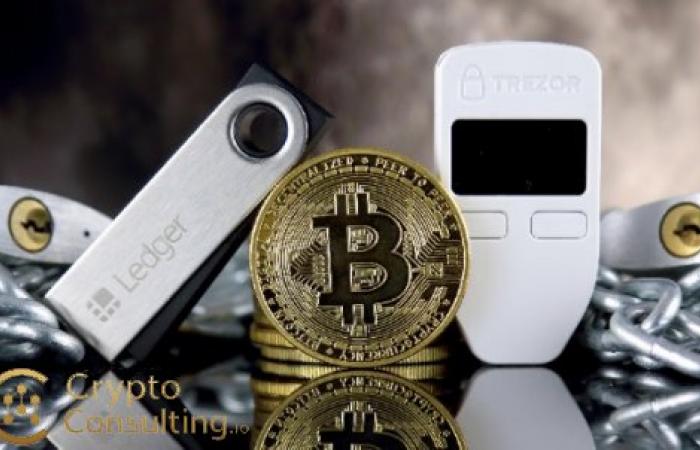Buying your first Bitcoin represents an exciting entry into the cryptocurrency world. This comprehensive guide walks you through every step of the process, from selecting a reputable exchange to securely storing your Bitcoin. Whether you're investing for the long term or exploring cryptocurrency technology, following these steps ensures a safe and informed purchasing experience.
Step 1: Choose a cryptocurrency exchange. Exchanges serve as marketplaces where you can buy Bitcoin with traditional currency. Reputable options for beginners include Coinbase for its user-friendly interface and educational resources, Kraken for advanced features and security, and Gemini for regulatory compliance and insurance coverage. Research multiple exchanges, comparing fees, available payment methods, security features, and supported regions before making your selection.
Exchange fees significantly impact your total cost. Maker-taker fees apply to limit orders versus market orders. Deposit and withdrawal fees vary by payment method. Some exchanges charge percentage-based fees while others use flat rates. Coinbase charges approximately 0.5% trading fees plus spread costs, while Coinbase Pro offers lower fees around 0.1-0.5%. Understanding fee structures helps minimize costs, especially for smaller purchases.

Step 2: Create your exchange account. Visit the exchange's official website (verify the URL to avoid phishing sites) and click 'Sign Up' or 'Register'. Provide your email address and create a strong, unique password. Many exchanges send verification emails to confirm your email address. Click the verification link and complete basic account setup. Enable two-factor authentication immediately to protect your account from unauthorized access.
Step 3: Complete identity verification (KYC). Regulatory compliance requires most exchanges to verify user identities. Prepare government-issued identification (passport, driver's license, or national ID card) and sometimes proof of address (utility bill or bank statement). Upload clear photos of your documents through the exchange's verification system. Verification typically takes a few hours to several days depending on the exchange and current volume.
Step 4: Add a payment method. Exchanges accept various payment methods including bank transfers, debit cards, credit cards, and sometimes PayPal or other digital payment services. Bank transfers (ACH in the US) typically offer the lowest fees but require several days for processing. Debit and credit cards enable instant purchases but charge higher fees around 3-4%. Link your preferred payment method through the exchange's payment settings.
Step 5: Navigate to Bitcoin buying interface. Once your account is verified and funded, locate the 'Buy' or 'Trade' section. Search for Bitcoin (ticker symbol BTC) in the available cryptocurrencies list. Most exchanges offer simple buy interfaces for beginners alongside advanced trading views for experienced users. Select the simple buy option to start.
Step 6: Enter purchase details. Specify how much Bitcoin you want to buy. You can enter either the fiat currency amount you want to spend (e.g., $100 USD) or the amount of Bitcoin you want to purchase (e.g., 0.001 BTC). The exchange displays the current exchange rate, fees, and total cost. Review this information carefully before proceeding. Current Bitcoin prices fluctuate constantly, so expect slight variations between quotes.
Step 7: Review and confirm purchase. Double-check the purchase details including the amount, fees, and total cost. Most exchanges show a preview screen before finalizing the transaction. Confirm you understand the fees and accept the exchange rate. Click 'Buy Bitcoin' or similar button to execute the purchase. The exchange processes your payment and credits Bitcoin to your exchange account wallet.
Step 8: Verify your Bitcoin purchase. Navigate to your portfolio or wallet section to confirm Bitcoin appears in your account. The balance should reflect the amount purchased minus any fees. Transaction confirmations on the Bitcoin blockchain take approximately 10 minutes, though exchanges often credit your account immediately with confirmation pending.
Step 9: Secure your Bitcoin. For long-term holding, transfer Bitcoin from the exchange to a personal wallet you control. Exchanges can be hacked or experience technical issues. Personal wallets provide full control over your Bitcoin. For beginners, start with a reputable hot wallet like Exodus or Electrum for small amounts. For significant holdings, invest in a hardware wallet like Ledger or Trezor.
Step 10: Practice security best practices. Enable two-factor authentication on all accounts. Never share private keys or recovery phrases. Be cautious of phishing attempts and scam messages. Keep software updated. Consider using a dedicated email for cryptocurrency accounts. Regularly back up wallet information securely.
Dollar-cost averaging (DCA) provides a sensible strategy for Bitcoin investing. Rather than trying to time the market with a large purchase, buy small amounts regularly (weekly or monthly). This approach averages your purchase price over time and reduces the impact of short-term volatility. Many exchanges offer automatic recurring purchases to simplify DCA strategies.
Tax considerations are important. Most jurisdictions treat cryptocurrency as property for tax purposes. Buying Bitcoin isn't immediately taxable, but selling, spending, or trading creates taxable events. Keep detailed records of purchase dates, amounts, and costs for accurate tax reporting. Consider consulting a tax professional familiar with cryptocurrency for guidance.
Congratulations on taking your first steps into cryptocurrency! Continue learning about blockchain technology, market fundamentals, and security practices. Start with small amounts until you're comfortable with the process. Join reputable cryptocurrency communities to learn from experienced users. Remember that Bitcoin and all cryptocurrencies are volatile investments, so only invest amounts you can afford to lose.






